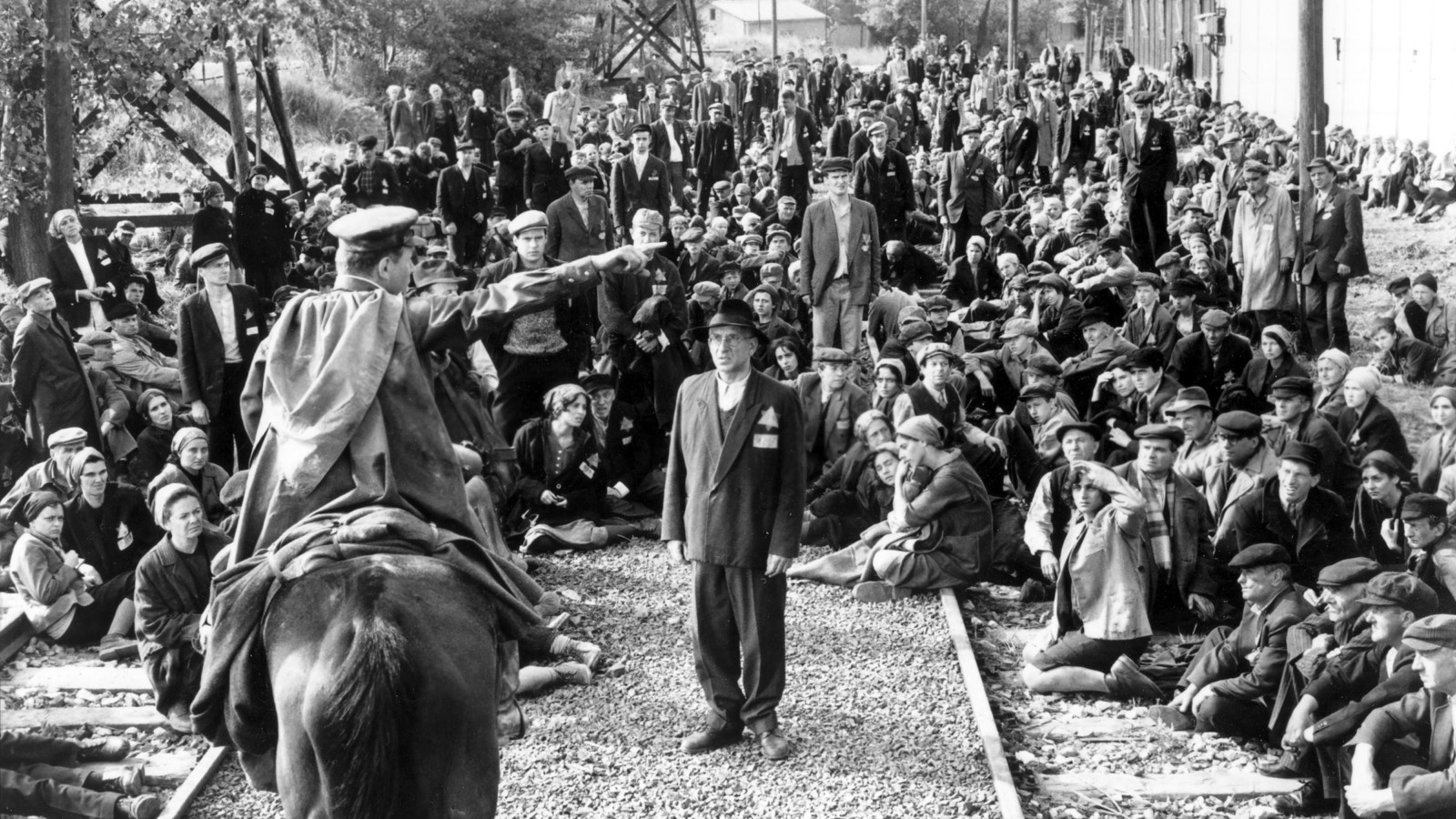Historian Henry Friedlander in his book, The Origins of Nazi Genocide from Euthansia to the Final Solution, points out that physically and mentally handicapped Germans and the Gypsies were the first victims of Nazi genocide, not Jews, and with this contention, he broadens the definition of the Holocaust. The Nazi actions toward physically and mentally handicapped Germans and gypsies foreshadow their Aktions on the Jews.
The Nazis Targeted Mentally Defective People, Gypsies, and Jews
First, the Nazis systematically isolated their targets from the German community and with the help of collaborating individuals and bureaucracy, gassed them. The Nazi reasons for the extermination of physically and mentally handicapped Germans, Gypsies, and Jews were the same – heredity.
The Nazis believed that physically and mentally handicapped people carried defective genes and had to be prevented from passing them on to succeeding generations to prevent the “mongrelizing” of the Aryan race. The Nazis considered the Gypsies racially degenerate, but not as dangerous as the Jews.
In the beginning the Nazis persecuted the Gypsies selectively, but Friedlander says that by 1943, the Nazis biologically selected all three groups for extermination.
Friedlander Argues that the Nazis Wanted to Achieve Racial Purity
Friedlander attributes the Holocaust to scientific racism and the belief that eliminating all undesirable people from the gene pool is essential to improving the human population and society. He concludes that the goal of Nazism was the total racial purification of the Third Reich. His views comport with Hitler when he wrote Mein Kampf. “If there is no power to fight for their own health, the right to live comes to an end.
Friedlander’s interpretation also examines the fate of the other “racially undesirable” groups like Soviet prisoners of war and Eastern European civilians that the Nazis put to death during World War II. He argues that if scholars just focus on Anti-Semitism and the fate of the Jews when studying the Holocaust, it is impossible to fully understand it. His critics counter that the Nazis chose only the Jews for total annihilation, and if Friedlander expands the definition of the Holocaust that expansion could detract from the dimensions of the Jewish tragedy.
The Impact of Friedlander’s Interpretation
Friedlander’s broadening of the definition of the Holocaust to include other groups that the Nazis considered undesirable is both positive and negative in its impact on scholarly and non-scholarly assessments of the Holocaust. A study of the scope of the Holocaust renders ridiculous the Holocaust denier argument that it never happened and that thousands of people died from the privations of war. Understanding the scope of the Holocaust also demonstrates the catastrophic impact of centuries of hatred and prejudice in the warp and woof of the national psyche and at the center of a nation’s culture.
Conversely, Holocaust deniers have used Friedlander’s argument that the focus of the Holocaust has to be widened to include victims besides the Jews to downplay what happened to the Jews. Indeed, in an argument redolent of Anti-Semitism, they contend that the Jews use the Holocaust to exploit their victim status for economic advantageHugh Gregory Gallagher’s Study
Hugh Gregory Gallagher’s book, By Trust Betrayed, is an example of Friedlander’s expansion of the Holocaust to include other than Jewish victims. Gallagher explores the Aktion T-4 program in Germany, which allowed the systematic killing of disabled, mentally retarded and mentally ill Germans in the Third Reich between 1939 and 1945. The program was set in motion by a signed order written on Hitler’s personal stationery and signed “A Hitler.”
Influenced by the widespread principles of the science of Eugenics, the German officials quickly embraced the program and implemented it with typical German efficiency. Numerous German doctors endorsed the Aktion T-4 program as scientifically sound and the best method of mercifully ridding society of “undesirable” members. Administrators established a special transportation network to transport victims from their homes to the killing centers without fuss or publicity. They quickly set in place a bureaucracy of intricate detail that included killing facilities across Germany and Austria. The T-4 victims were murdered in gas chambers disguised as shower baths.
The killing bureaucracy issued a steady flow of bogus government death certificates and condolence letters to families of the victims. The bureaucrats of killing told the families and friends of the victims that they had died of illness such as heart failure. As a final seal of the Nazi bargain with the devil, the relatives got an urn from an euthanasia center filled with mixed ashes from various victims. These trailblazing procedures were models for later killings at Belze, Sobibor and Treblinka.
Inevitably, word of the “mercy killings” spread throughout the communities surrounding the killing centers and the groundswell of protest resounded loudly enough for Hitler to officially halt the Aktion T-4 program on August 24, 1941. But the second phase of killing, decentralized and expanded to concentration camps and mental home inmates in the occupied countries, continued until 1945. Approximately 275,000 innocent people were killed as a result of the Aktion programs.
References
Henry Friedlander, The Origins of Nazi Genocide: From Euthanasia to the Final Solution. The University of North Carolina Press, 1997.
Hugh Gregory Gallagher, By Trust Betrayed. Arlington, Virginia: Vandamere Press, 1995.


